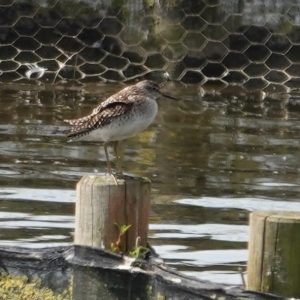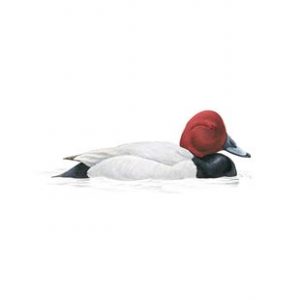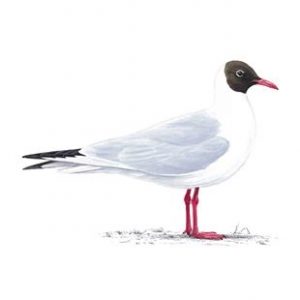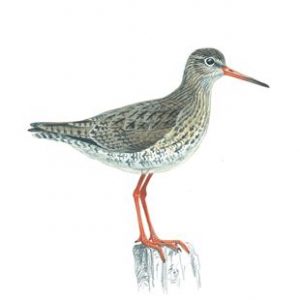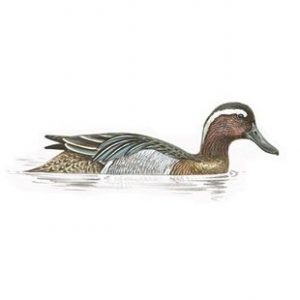William Legge reports on sightings over this period:
The weather was rather mixed throughout April and into the first weeks of May. Settled and warmer conditions developed in late May and ramped up into a gloriously sunny and hot June. In fact it turned out to be the warmest June on record, perforated by the odd thundery shower when the mercury spiked. Cooler and more changeable conditions returned at the end of the month and continued into July.
Birding-wise it was an active few months, with spring migration followed by a productive breeding season only clouded by a serious outbreak of Avian flu within the Black-headed Gull colony (more on that later).
April-May
April and early May are probably the best time of the year to connect with some of the scarcer migrants that can pass-through Fleet Pond. If you are lucky, they may even stay around for a few hours, a day or longer.
This year didn’t disappoint with an abundance of migrants appearing on April 10th. An adult Little Gull, an Arctic Tern and an Oystercatcher all dropped in, along with the first of many spring records of Common Tern, up to 70 Sand Martins and an impressive tally of 19 Red Kites passed through.
A Northern Wheatear, a local scarcity, was present on the MoD Common on April 11th. A Sandwich Tern, primarily a coastal species, circled the Pond early on April 13th before drifting off east. This coincided with the year’s first sighting of Hobby and Reed Warbler, with two of the latter in song at the Wellington Avenue reedbed, matching’s 2022’s first arrival date.
Fly-through migrants included a Woodlark over northwest on April 15th and a Raven on April 16th. A late Brambling, a Yellow Wagtail and the first Common Swift of the spring, all headed over northeast on April 20th, (the latter seven days earlier than 2022’s first sighting). The only Cuckoo of the spring ‘tree-hopped’ its way through the reserve on April 22nd, calling as it went.
Early May contributed an adult Kittiwake, another unexpected coastal species, which circled the pond before leaving southwest on May 2nd. This was followed by the discovery of a Wood Sandpiper standing on a post off Lions’ View mid-morning on May 3rd, (pictured above) perhaps the highlight of the spring. Representing only the seventh record for Fleet Pond, it coincided with an influx of over 25+ Wood Sandpipers across the UK that day and it remained into the early afternoon enabling several local birders to catch-up with it.
The first Common Sandpiper of the spring appeared that day, with another logged on May 20th. A Little Gull, the second of the spring, was present at the reserve on May 8th, this one a 2nd calendar year (2nd CY) and it remained faithful to the reserve until at least May 19th, regularly commuting between Fleet Pond and Edenbrook Country Park during its twelve day stay. The spring finale came in the form of a fine Black Tern gracing the Pond on the late date of June 1st, the fourth species of tern to be logged this spring.
The Breeding Season
With continued better water quality and plenty of aquatic plant growth within the main pond, it is turning out to be another good year for breeding wildfowl, particularly for Tufted Duck. A record count of 107 adults was logged on May 9th with 80-90 still present into June. At the time of writing 13 broods of Tufted Duck have been logged, with others expected in the coming weeks, ensuring Fleet Pond will retain its 1st place rank with the highest breeding density of the species in Hampshire.
Mallard and Gadwall logged 18 and three broods respectively, the latter down from 2022’s six pairs, with only five young surviving. Better news concerned Common Pochard (illustrated below), with three pairs present which raised five young from two broods, up from just the one young raised in 2022. A pair of Shoveler were present between May 18th to June 4th, but did not nest.
Four pairs of Great Crested Grebes were in residence. Only one pair successfully hatched two young, and at the time of writing, only one of these young surviving. However, there is still plenty of time for the other pairs to have a second breeding attempt.
Two pairs of Mute Swans bred (one on the Little Pond) and at least one pair of Greylag Geese raised one young. Other breeding successes included eight pairs of Grey Heron which raised 14 young (up from seven nests in 2022) and 23 broods of Coot, another reserve record.
Intriguingly, up to five Little Egrets were present throughout the season, with mating seen in early June and a pair briefly occupying a nest, which they sadly abandoned. Next year perhaps!
Breeding passerine territories included at least two Sedge Warblers, four Cetti’s Warblers, 15-20 Blackcaps, 18 Whitethroats (with three territories on the reserve), and 13+ Common Chiffchaffs. A Firecrest was singing near Kenilworth Road on April 13th but there were no further reports. Breeding success on land adjoining the reserve included three pairs of Stonechats, two on the MoD Common and one at Pondtail Heath. The latter also hosted two pairs of Dartford Warblers with at least one fledging young.
Sad news came from the reserve’s Black-headed Gull colony which was severely impacted by an outbreak of Avian flu in early May. Dozens of dead adult Black-headed Gulls (illustrated above) started to wash-up at the Pond’s shoreline. The outbreak was devastating, with the initial 120 pairs present in late April reduced to just 25 breeding pairs by June, and only five young were raised. The Black-headed Gull colony at Moor Green Lakes at Eversley was also impacted. Nationally, early reports suggest a minimum of 10,000 Black-headed Gulls have succumbed to Avian flu since March 2023, representing 4% of the total UK population. Thankfully, it seems the outbreak has been restricted to just the Pond’s Black-headed Gull colony at this time, but we will be keeping an eye on the health of other species over the summer. Fingers crossed!
Post Breeding and Early Autumn Migrants
Mid-to-late June heralds a change of seasons in the birding calendar as failed and early breeders begin their southbound migration, and other species disperse widely from their breeding sites. Activity started early this year with an unseasonal record of a Common Gull (2nd CY) on June 12th. The first real pulse of migrants occurred on June 21st with a Common Redshank (illustrated above) dropping in briefly early that morning, with another two arriving that evening. Also newly arrived that day was a Teal and three Shovelers, with the tally of the latter rising to seven by June 26th.
June 23rd saw the arrival of an elusive male Garganey (illustrated below) which remained into 24th as well as another Common Redshank and a Little Ringed Plover. As the autumn migration starts to build steam in July and August, the next few months will ensure there is plenty to find and see at Fleet Pond. Good Birding!
Contributing Observers: TS Au Yeung, Harry Boorman, Arun Bose, Ed Butler, John Clark, KP Duncan, Lalizar Harrison, Axel Kirby, Rowena Robinson, Benedict Roose, Dhruba Saikia, Sarah Slingo, Graham Stephenson, Sarah-Jayne Van Greune, C H Wan and Keith Wills.
Photograph and illustration credits:
Wood Sandpiper — Ed Butler
RSPB www.rspb.org.uk/birds-and-wildlife/wildlife-guides/bird-a-z/

